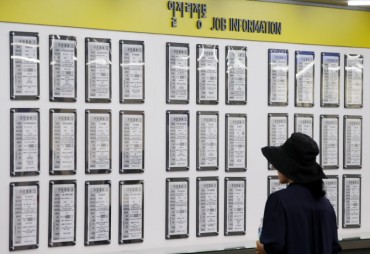
According to a Statistics Korea report released on December 12, those with at maximum a middle school education saw their income rise by 144 percent from 1995 to 2016, but graduates of 4-year postsecondary institutions or higher enjoyed a 186.3 percent bump through the same period. (Image: Korea Bizwire)
SEJONG, Dec. 13 (Korea Bizwire) – Over the past 21 years, the level of education one has attained has had a marked effect on income, research has found.
According to a Statistics Korea report released on December 12, those with at maximum a middle school education saw their income rise by 144 percent from 1995 to 2016, but graduates of 4-year postsecondary institutions or higher enjoyed a 186.3 percent bump through the same period.
Individuals who finished high school, meanwhile, saw their income growth fall in the middle at 168.8 percent.
The percentages were calculated by taking the average monthly salary of regular employees at workplaces with a minimum of five staff, and comparing these figures to those in 2016. Using these parameters, in 1995 graduates of high school and technical colleges earned 860,000 won and 940,000 won. Those with a middle school education or less and a 4-year university diploma or greater earned 780,000 won and 1.26 million won respectively (all amounts rounded up to 10,000 won). In 2016, income was as follows (in order of middle school or less, high school, technical college, 4-year university or more): 1.91 million won, 2.31 million won, 2.63 million won, 3.62 million won.
The Statistics Korea report concluded, “University graduates’ income premiums are substantial, and as time passes, they are gradually increasing.”
Among individuals who had successfully completed higher education, those from a medical background had the highest rate of employment at 83.2 percent, and the second highest were engineering graduates at 71.3 percent (2015 figures).

Those with a middle school education or less and a 4-year university diploma or greater earned 780,000 won and 1.26 million won respectively (all amounts rounded up to 10,000 won). (Image: Korea Bizwire)
With a 50.8 percent employment rate, the liberal arts, performing arts and environmental studies were the fields of study for which graduates had the highest difficulty in snagging a job.
When considering rates of employment with the professed reason for choosing a field of study, employment rate was highest among university graduates who had selected their major based on future job prospects (73.5 percent). The lowest rates were among those who had chosen their major by taking others’ advice (66.4 percent).
Average monthly salary, like employment rate, was higher for those who had chosen their field of study for future work purposes compared to graduates who had entered majors for “interest” and “fit”, excluding those from the medical and engineering fields.
S.B.W. (sbw266@koreabizwire.com)






